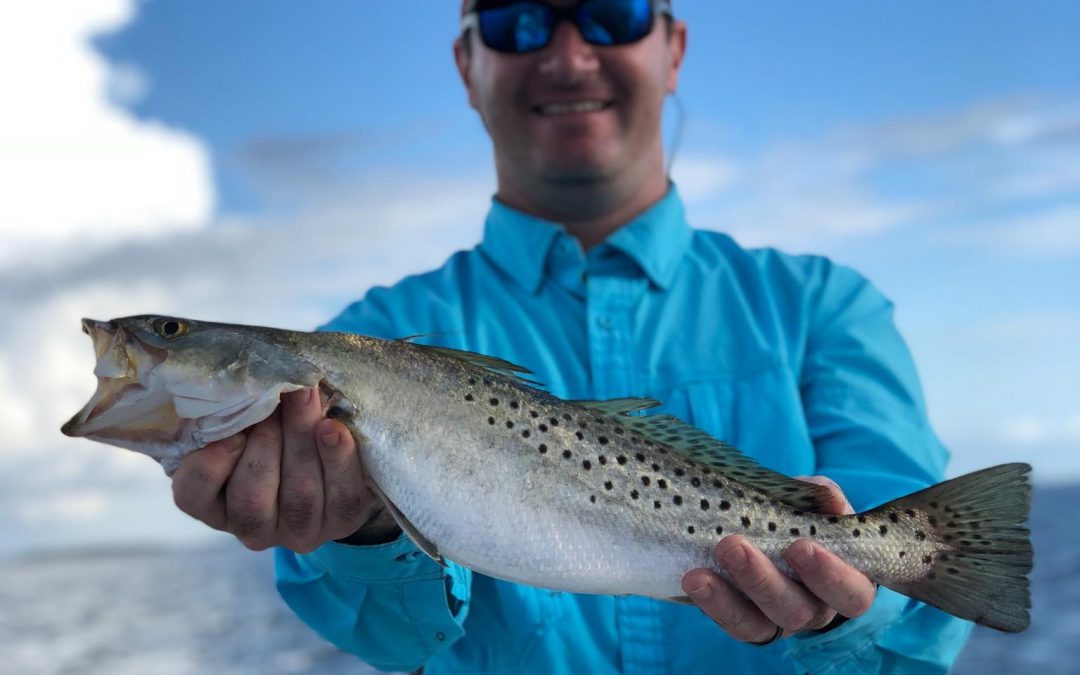
by Mark Mauldin | Feb 5, 2021
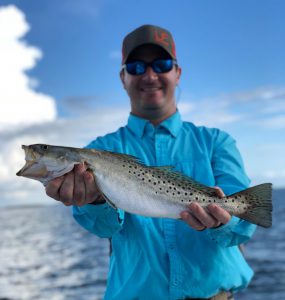
Reminder: Spotted seatrout harvest is closed in the Western Panhandle Management Zone the entire month of February.
New regulations were put into place last year reducing bag limits and closing harvest during February in the Western Panhandle Management Zone. For more details see my previous post on the subject.When Spotted Seatrout season is open (months other than February) in the Western Panhandle Management Zone the daily bag limit is 3 per harvester. Harvested Spotted Seatrout must be more than 15 inches long and less than 19 inches long. One fish, per vessel, over 19 inches my be included in the bag limit.
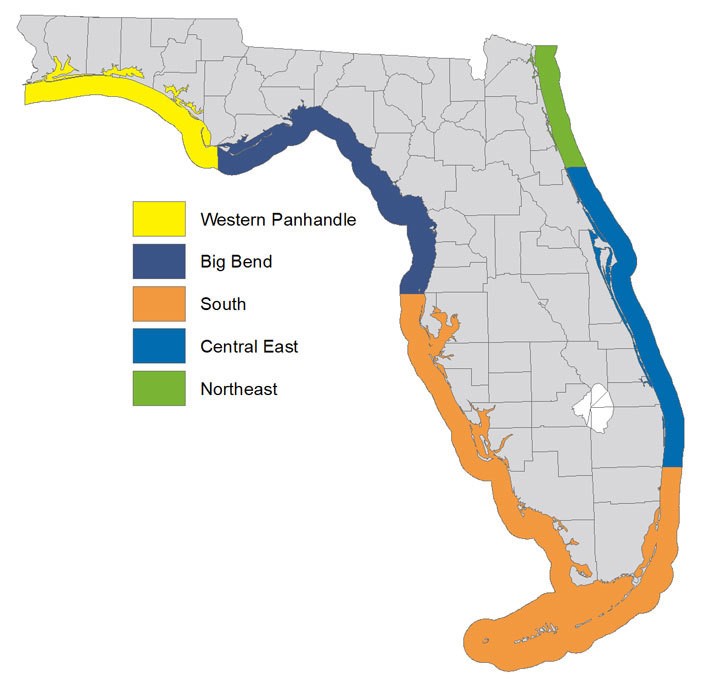
The Western Panhandle Spotted Seatrout Management Zone includes the State and federal waters of Escambia County through the portions of Gulf County west of longitude 85 degrees, 13.76 minutes but NOT including Indian Pass/Indian Lagoon.
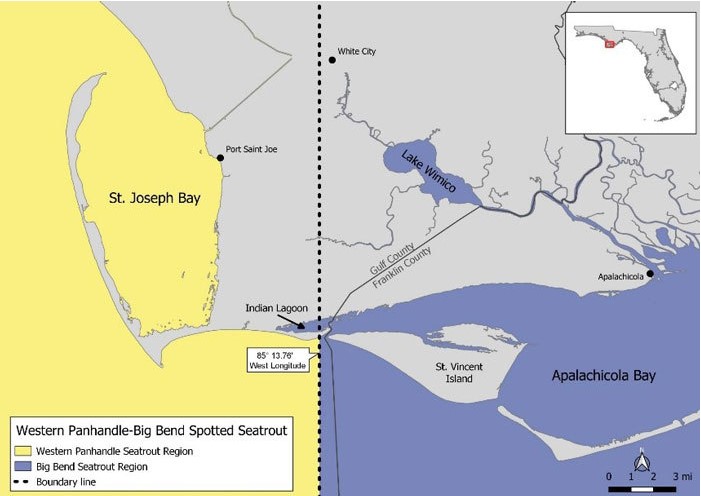
Boundary between the Western Panhandle and Big Bend spotted seatrout management zones.
Image source: www.myfwc.com
See myfwc.com for complete information on all game and fish regulations in Florida.
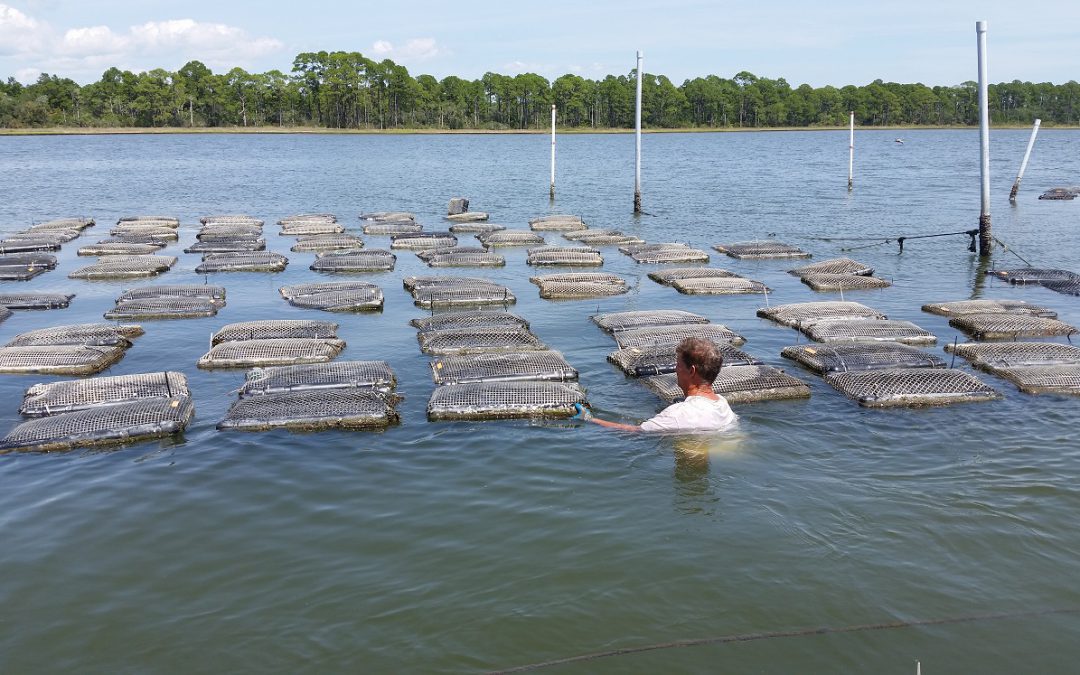
by Erik Lovestrand | Sep 25, 2020
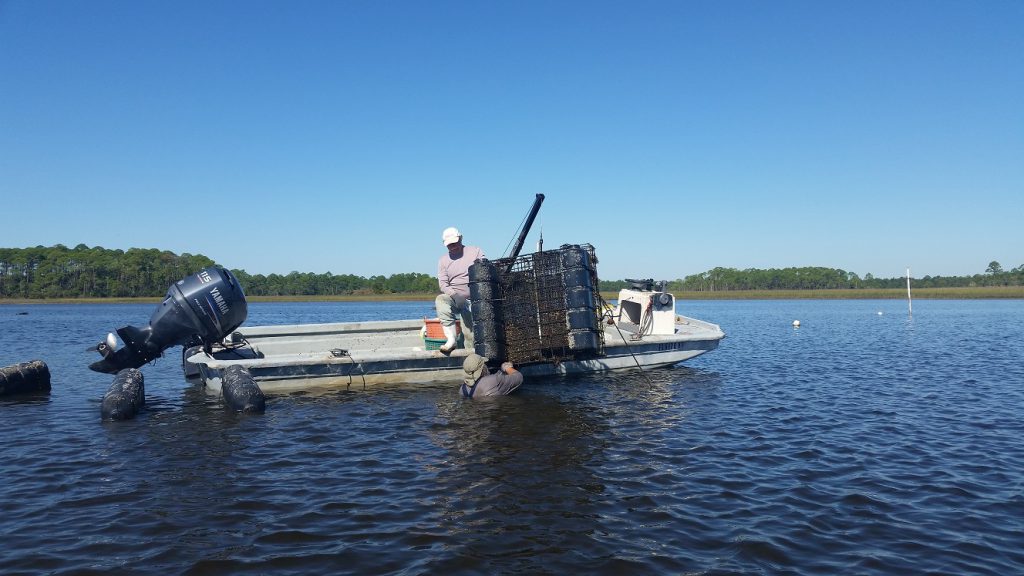
Hard work and perseverance are a must for oyster farmers.
On September 17, 2020, President Trump and US Secretary of Agriculture, Sonny Perdue, announced a second phase of an important program assisting America’s farmers. The Coronavirus Food Assistance Program (CFAP 1) was originally announced in April 2020 and now CFAP 2 will provide up to an additional $40 billion in support, along with adding more than 40 specialty crops not previously covered under CFAP 1.
This will be welcome news for many Panhandle farmers; particularly the ones that conduct their “chores” in our Panhandle bays and bayous by producing aquacultured oysters and clams. Losses in sales of molluscan shellfish were not covered under CFAP 1 because they were eligible for some assistance under the CARES Act (Coronavirus Aid, Relief, and Economic Security). However, many local growers were not able to qualify under the CARES Act for various reasons and are in serious need of assistance. When restaurants and bars were forced to close during the pandemic, sales of fresh oysters and clams basically came to a standstill overnight. Many creative efforts at direct marketing to customers and other avenues to move these time-sensitive products have been undertaken but sales are still far from what they were in 2019, leaving many growers with bills to pay and a significantly reduced bottom line.
Applications for CFAP 2 will be accepted by the USDA from September 21 through December 11, 2020. Payments will be based on 2019 sales, excepting new farmers who had no sales in 2019. Their calculations will be based on 2020 sales up to the point of application. The percent-payment-factor will be figured on a sliding scale, depending on amount of sales; ranging from 10.6% for sales below $50,000 to 8.8% for sales over $1 million.
The USDA has done a very good job of laying out information regarding the program on their website (here) and also provide assistance through their local Farm Service Agency offices around the state. Assistance with applications is available on line at this link. Two of the counties that have a significant and growing oyster aquaculture industry in the mid-Panhandle are Wakulla and Franklin. The FSA office for Wakulla County is in Monticello and can be called at (850) 997-2072 ext 2, or email Melissa Rodgers at melissa.rodgers@usda.gov. Growers in Franklin County can reach their FSA office in Blountstown at (850) 674-8388 ext 2, or email Brent Reitmeier at brent.reitmeier@usda.gov.
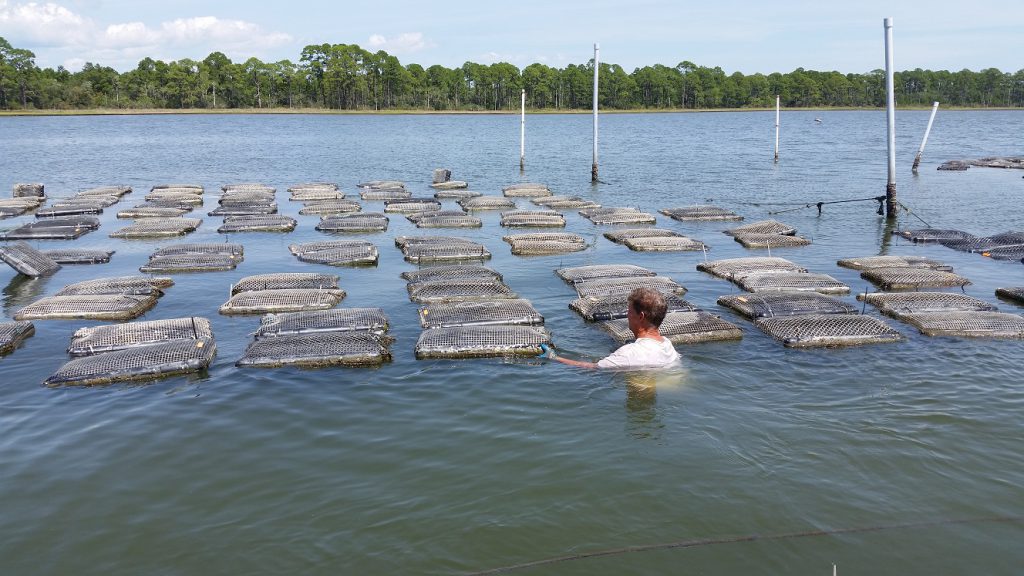
Growing oysters in floating bags requires getting wet, alot
With the plethora of confusing acronyms flying around in our present day, CFAP is one worth paying attention to. Why? Because it is providing targeted assistance to a segment of our US economy we should all stand behind. Agriculture is a critical component of all of our lives each and every day. If you have a chance to thank a farmer for what they do, or a legislator for moving this effort forward, or an industry support group that provided the data the legislator needed; don’t miss the opportunity. The hard-working men and woman who produce our food supply, including great, locally grown fresh seafood, deserve it.
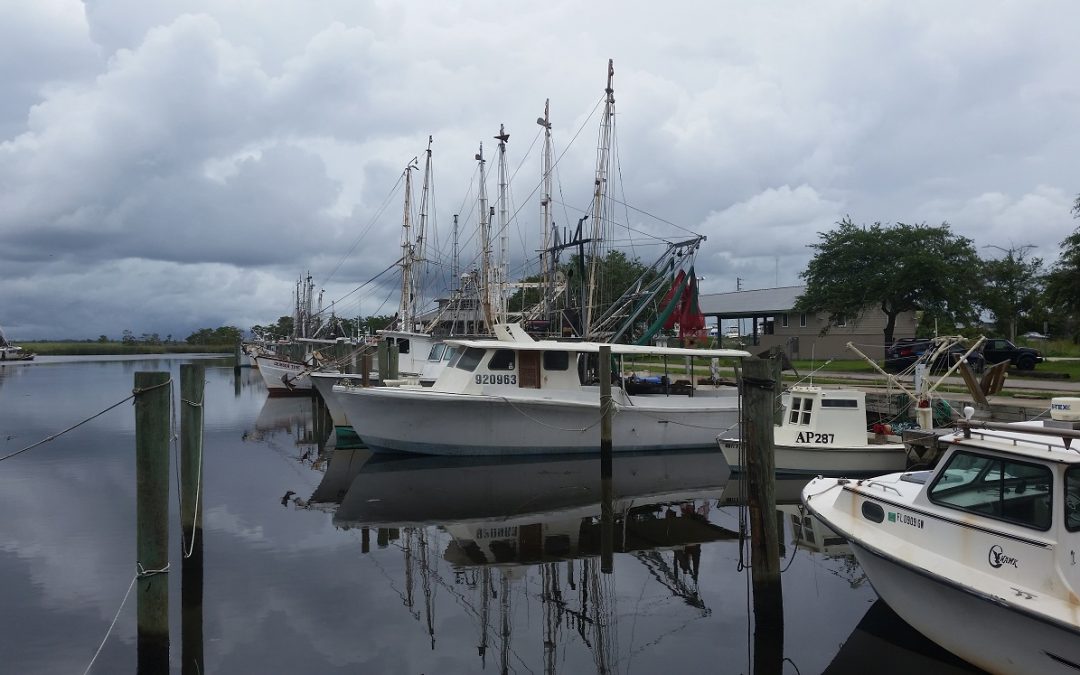
by Erik Lovestrand | Jul 31, 2020
We won’t see it tomorrow… but desperately needed funds for a hard-hit fishing industry are on the way. Congress has allocated $300 million in relief funds for losses suffered by various fishery-related businesses as a result of the COVID-19 pandemic. It comes as part of the $1.8 trillion CARES Act, which focuses on supporting businesses and individuals who have had financial losses during these difficult times.
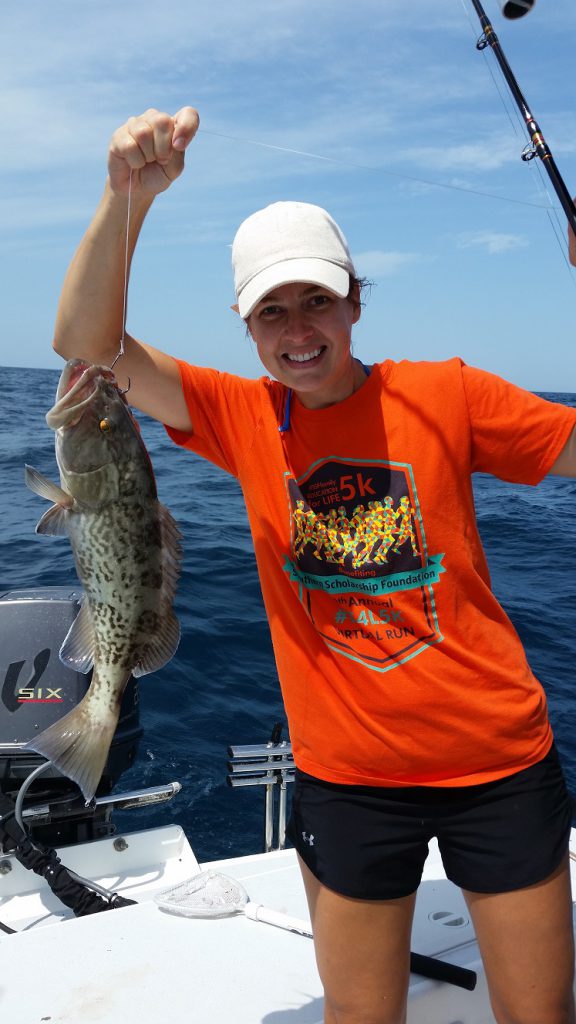
The Charter Fishing Industry was Impacted as People Stopped Travelling.
To allocate the Sec. 12005 funds, NOAA Fisheries used readily available multi-year averages to estimate the total average annual revenues from commercial fishing operations, aquaculture firms, the seafood supply chain (processors, dealers, wholesalers and distributors) and charter fishing businesses from each coastal state, Tribe, and territory. Florida’s share worked out to be $22.4 million for eligible applicants, which includes licensed commercial fishers, seafood wholesale dealers, charter fishing businesses, and aquaculture use certificate holders that are live-rock or bivalve producers. Applicants must be able to document at least a 35% loss of revenue between Jan-May 2020 as compared to the average of the previous five years during the same period.
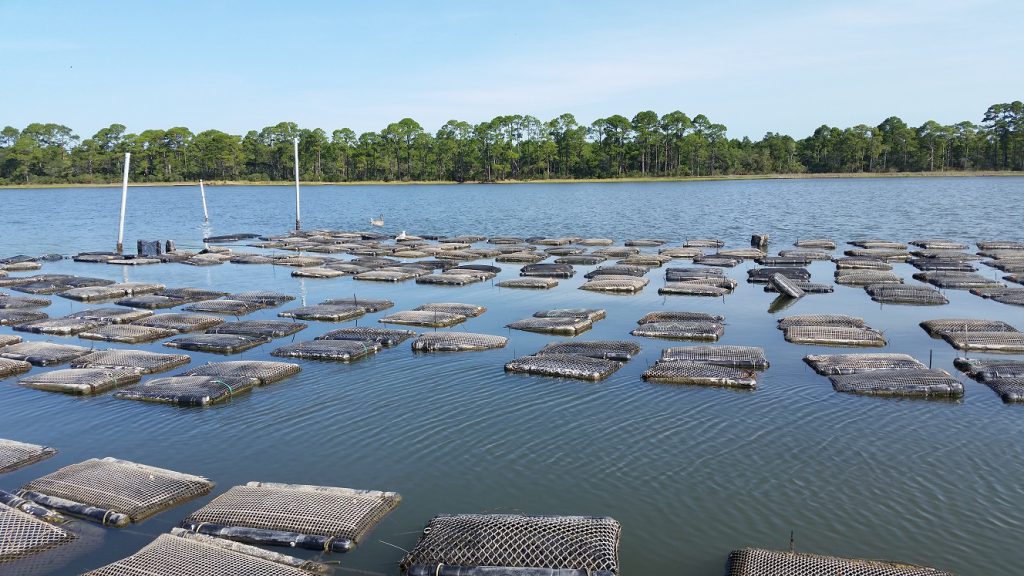
Oyster Farmers were Dramatically Impacted when Restaurants Closed.
The Florida Fish and Wildlife Conservation Commission received public input during July and will be submitting Florida’s plan for approval to NOAA in early August. After NOAA approval, the FWC will be administering the application and approval process, while the Atlantic States Marine Fisheries Commission will be sending checks directly to successful applicants. This supportive funding will be in the form of a grant and will not require repayment.
To see the FWC’s draft spending plan that will be going to NOAA click HERE. If you would like more information about the CARES Act and the FWC’s role in this effort please visit their website at this LINK. If you think you might be eligible for these funds, don’t wait for the 30 day application period to open (planned for October 2020) before doing your research on this relief funding. Go now to the FWC spending plan so you can begin preparing the documentation that will be required. With the impacts sustained from Hurricane Michael and now the virus, it is hard to imagine an industry sector in our Panhandle region that is more in need of help.
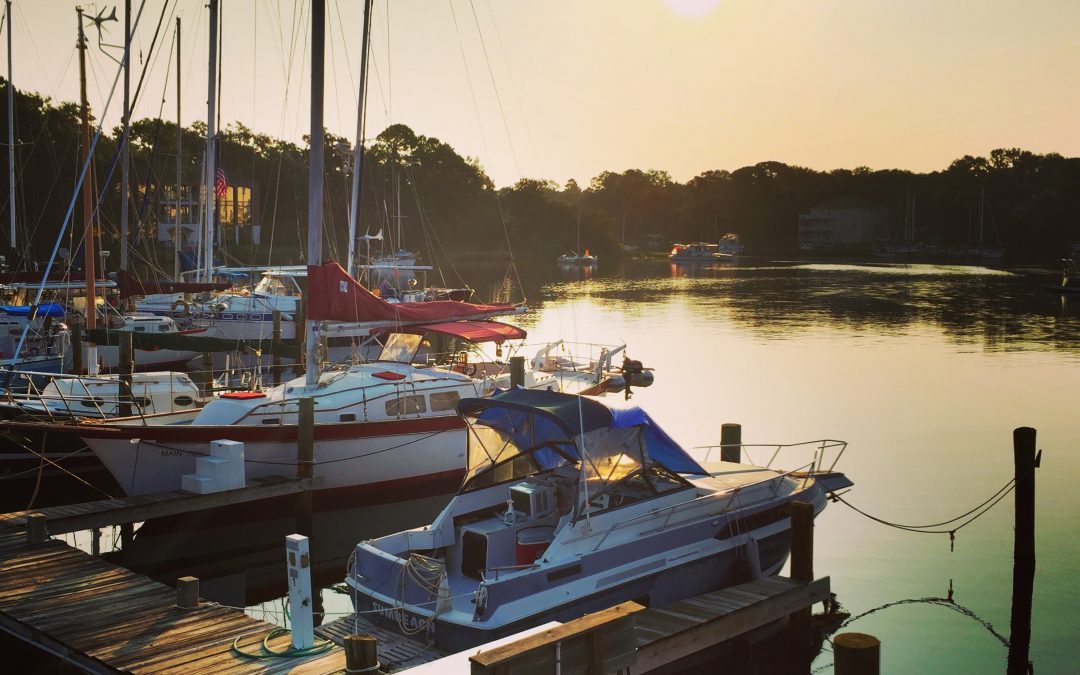
by Scott Jackson | Apr 17, 2020
Florida Sea Grant is maintaining a curated list of disaster assistance options for Florida’s coastal businesses disrupted by COVID-19.
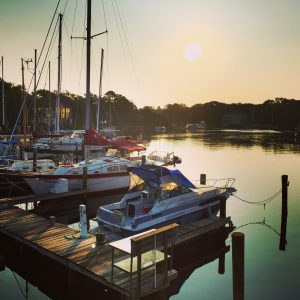
Boats at calmly at rest in Massalina Bayou, Bay County, Florida.
The list contains links to details about well- and lesser-known options and includes “quick takeaway” overviews of each assistance program. Well-funded and widely available programs are prioritized on the list. The page also houses a collection of links to additional useful resources, including materials in Spanish.
“There is a lot of information floating around out there,” says Andrew Ropicki, Florida Sea Grant natural resources economist and one of the project leaders. “We are trying to provide a timely and accurate collection of resources that will be useful for Florida coastal businesses.”
Ropicki and others on the project team stress that the best place to start an application for disaster aid is to visit with your bank or lender and the Florida Small Business Development Center (SBDC). They also suggest contacting local representatives by telephone or email and not to just rely on internet-based applications.
Overview of Selected Disaster Assistance Programs Benefiting Florida Small Businesses including Agriculture, Aquaculture, and Fisheries (COVID-19)
The project team — which includes experts from Florida Sea Grant, University of Florida Institute of Food and Agricultural Sciences (UF/IFAS) Extension, and the UF/IFAS Center for Public Issues Education — reviews the page regularly for accuracy and to include new options.
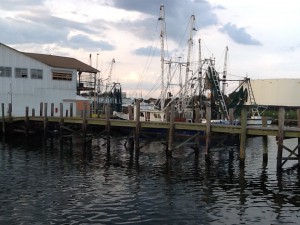
Commercial seafood is a large part of Florida’s economy and culture.
Photo: Rick O’Connor
“[I] really appreciate the outstanding work that you and FSG have done on consolidating the various types of aid available to fishermen due to the virus,” said Bill Kelly, executive director of the Florida Keys Commercial Fishermen’s Association, in a recent email. “I’ve been searching for a comprehensive listing and you just provided it.”

by Shep Eubanks | Sep 13, 2019

Common Salvinia Covering Farm pond in Gadsden County
Photo Credit – Shep Eubanks UF/IFAS Gadsden County Extension
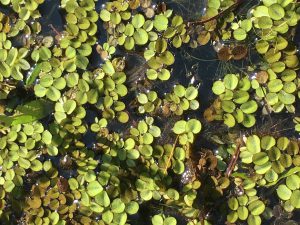
Close up of common Salvinia
Photo Credit – Shep Eubanks UF/IFAS Gadsden County Extension
Aquatic weed problems are common in the panhandle of Florida. Common Salvinia (Salvinia minima) is a persistent invasive weed problem found in many ponds in Gadsden County. There are ten species of salvinia in the tropical Americas but none are native to Florida. They are actually floating ferns that measure about 3/4 inch in length. Typically it is found in still waters that contain high organic matter. It can be found free-floating or in the mud. The leaves are round to somewhat broadly elliptic, (0.4–1 in long), with the upper surface having 4-pronged hairs and the lower surface is hairy. It commonly occurs in freshwater ponds and swamps from the peninsula to the central panhandle of Florida.
Reproduction is by spores, or fragmentation of plants, and it can proliferate rapidly allowing it to be an aggressive invasive species. When these colonies cover the surface of a pond as pictured above they need to be controlled as the risk of oxygen depletion and fish kill is a possibility. If the pond is heavily infested with weeds, it may be possible (depending on the herbicide chosen) to treat the pond in sections and let each section decompose for about two weeks before treating another section. Aeration, particularly at night, for several days after treatment may help control the oxygen depletion.
Control measures include raking or seining, but remember that fragmentation propagates the plant. Grass carp will consume salvinia but are usually not effective for total control. Chemical control measures include :carfentrazone, diquat, fluridone, flumioxazin, glyphosate, imazamox, and penoxsulam.
For more information reference these IFAS publications:
Efficacy of Herbicide Active ingredients Against Aquatic Weeds
Common salvinia
For help with controlling Common salvinia consult with your local Extension Agent for weed control recommendations, as needed.

by Rick O'Connor | Jun 28, 2019
Or just mullet… maybe you prefer “mu-lay”…
Either way it is a fish we all know and love. Those of us who grew up here on the Gulf coast know this fish as part of our culture. I remember numerous family gatherings where fried mullet was the order of the day. Along with grits, baked beans, cole slaw, and iced tea you had your “mullet plate”. It is the fish of choice for Catholic fish fries during Lent. It is the icon of the “Mullet Toss” event at the Flora-Bama, which draws huge crowds and people plan for all year. It almost became the mascot of minor league baseball team. One my favorites was a story told to me by a colleague who used to teach at the old Booker T. Washington High School when it was on “A” street. He told me each morning the janitorial staff would catch mullet for the school lunches. They would have your classic “mullet plate” for lunch everyday – fresh from the bay – how good is that. It is the fish that “jumps” and everyone knows what it is.

The Striped Mullet.
Image: LSU Extension
I paddle area waters monitoring a variety of things assessing the health status of Pensacola Bay. While out there I see a lot of wildlife, but mullet is one of the more common ones. Wherever I go, open intracoastal waterway, grassbeds, bayous, marshes, even backwater creeks where the water is almost stagnant, I find mullet. You see their swirls, schools gliding beneath your paddleboard or kayak, I even watched one make unusual circles with its head above water once. And always the “jump”, they are always jumping. But I had never really thought much about their biology. Many folks observe and study more unusual, or problematic fish, like lionfish. But the mullet slips by the radar. It is more like… “oh yea, then there is the mullet”, and we do not think of them more than that.
Local recreational and commercial fishermen are aware of their movements and behaviors. They know when and where they will be at different times of the year. But I thought I would do some digging and educate the rest of you about this amazing fish who is like part of the family.
There are actually two species of mullet swimming in area waters. The striped mullet (Mugil cephalus) is more common. It is one that the commercial fishermen seek, FWC lists as the “black mullet” on their commercial guides. The other is the white mullet (Mugil curema). They differ in that the anal fin of the white mullet has 9 soft rays; the striped has 8. Large striped mullet will have stripes, which the large white mullet lack. The juveniles of both species lack stripes. When caught and still alive, the white mullet will have a bright gold spot on the operculum (the bone covering the gills), this is lacking on the striped mullet.
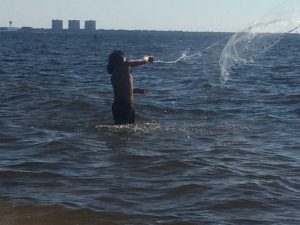
A fisherman throws a cast net to catch mullet at White Point in Choctawhatchee Bay
Mullet are euryhaline… meaning they can tolerate a wide range of salinities and can be found in fresh or saltwater. They travel in schools, feeding off of the bottom. Their diet consists of bacteria and single-celled algae found attached to plants. They pick at the bottom, and scrape seagrasses consuming these.
They spawn most of the year, but the peak is between October and December. Spawning takes place in the open Gulf of Mexico, sometimes far offshore. They become sexual mature at three years old and can produce 0.5 – 4 million eggs. Mullet roe (fish eggs) is a local delicacy for some. They have been reported at an age of 16 years – long time for a fish.
While studying marine biology in college, I remember someone asked our professor why mullet jump. He paused for several seconds and then replied – “for the same reason manta rays jump”… there was a long pause… so we bit the bait – “okay, why do manta rays jump?” “We don’t know”. Classic…
However, they now have an idea why. It is believed they clean their gills doing this and also oxygenate those gills in stagnant, warm, low oxygen waters that mullet find themselves in periodically.
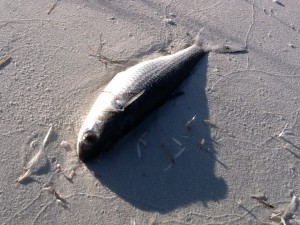
A striped mullet died during cold stress.
It is a local commercial fishery. Between 2018-2019 412,421 pounds of mullet were landed in Escambia County, another 151,638 pounds in Santa Rosa. This made it the number one fish for the season. Between the two counties the value of the fishery was $456,892 but sells better as a bait than as food.
It is truly a magnificent fish. Their numbers have increased since the 1995 net ban and has become one of the more common fish we see while exploring local estuarine waters. I certainly will not take them for granted any longer.


















